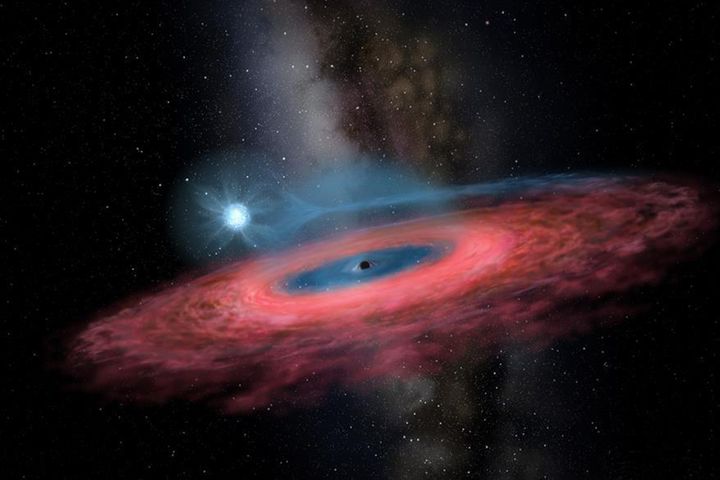 Chinese Scientists Spot Impossibly Large Black Hole in Space
Chinese Scientists Spot Impossibly Large Black Hole in Space(Yicai Global) Nov. 28 -- Chinese scientists have discovered the largest stellar-mass black hole in the Milky Way so far found. At 70 times the mass of our sun, its size is impossible according to current theories.
The black hole, designated as LB-1, is 15,000 light years from Earth, according to the findings of a research team led by Liu Jifeng and Zhang Haotong from the National Astronomical Observatories of the Chinese Academy of Sciences. The discovery was made public in an article published today in the international science journal Nature.
The team spotted LB-1 using the large sky area multi-object fiber spectroscopic telescope, or LAMOST. Its discovery will have a revolutionary impact on ideas about how black holes are formed.
"Black holes of such mass should not even exist in our galaxy, according to most of the current models of stellar evolution," Liu said in a statement. "LB-1 is twice as massive as what we thought possible. Now theorists will have to take up the challenge of explaining its formation."
The team also used data from Gran Telescopio Canarias in Spain, and Keck Telescope and Chandra X-ray Observatory in the US. The final study was led by 55 authors from 29 research institutes in China, the US, Spain, Australia, Italy, Poland and the Netherlands.
Stellar-mass black holes, formed after the death of large stars, are widespread in the universe, and theoretically there may be hundreds of millions in the Milky Way galaxy. However, because of the difficulty in observing them, only about 20 have been discovered, and these are less than 20 times the mass of our sun.
The latest discovery gives scientists a new way to find black holes. In future, astronomers are expected to discover many more black holes, relying on LAMOST's high observation efficiency.
At the same time, the current model of stellar evolution states that only black holes with a maximum mass of 25 times our sun can form, so the new discovery also upends perceptions of black hole formation.
LAMOST, also known as Guo Shoujing Telescope, was built in 2009 at the National Astronomical Observatories' observation station in Xinglong county, in China's northern Hebei province. It went into operation in 2011. It is now the world's most spectrally accessible telescope thanks to 4,000 optical fibers at its focal plane.